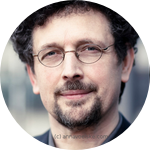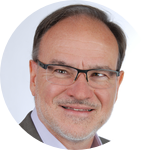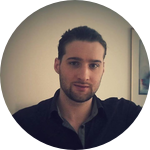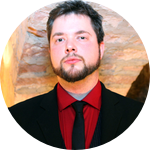About This Project
While dreaming, you can become aware of the fact that you are dreaming and control your dream. This is called lucid dreaming. Although it would be great to know the science behind this phenomenon, research in lucid dreaming is difficult since frequent lucid dreamers are rarely encountered. We want to investigate the neurophysiology of lucid dream induction and develop a reliable lucid dream induction technique.
Ask the Scientists
Join The DiscussionWhat is the context of this research?
Most lucid dream induction techniques can be categorized into cognitive induction techniques, which are learned by the dreamer, and technical devices, which use stimulation to induce lucid dreams. Currently, nearly no reliable way of cognitive induction exists. However, certain elements of different techniques could produce desired effects.
Neurophysiological investigations linked lucid dreaming with brain activity in the gamma frequency band and activity in certain brain areas. Electrical stimulation in the gamma frequency band of these brain areas evoked lucidity in dreams up to 77%. While this approach is difficult and questionable, other approaches, like audio-visual stimulation, could also be a possible method for lucid dream induction.
What is the significance of this project?
Lucid dreaming offers the possibility to create a simulation of reality, in which any conceivable scenario is possible. Practical applications could be centered on the treatment of nightmares, anxiety and phobias, or even post-traumatic stress disorder. It could be used to train motor abilities in sports or to gain access to the “core of creativity” which can be helpful in solving difficult problems (Holzinger, 2014). Lucid dreaming offers vast practical possibilities and its investigation is essential for the understanding of consciousness (Metzinger, 2010).
What are the goals of the project?
First, we are going to design a setup to record physiological data. This setup will be used to differentiate sleep stages, detect eye movements to verify lucidity, record neurophysiological data for the investigation of patterns of lucidity induction at the neural level, and conduct audio-visual stimulation.
Second, we will collect and test scientifically validated cognitive lucid dream induction techniques, as well as new techniques developed in lucid dreaming communities. This includes the recording of physiological data, induction success rates and dream reports. Finally, we will try to evoke the neural correlates of the most successful lucid dream induction technique with audio-visual stimulation.
Budget
For EEG investigations like source localization, around 35 channels are recommended. Systems with this many channels are very expensive. An affordable system that is already in use is the 16 channel OpenBCI R&D Kit for $1,000. For our approach, these specifications are adequate, since our primarily investigated variables will be observed brain frequencies.
Laboratory systems are uncomfortable to wear and for uninterrupted sleep, sleep deprivation is often necessary. We want to overcome this obstacle by designing a comfortable framework for our biosensors. For the iterative construction of these wearables and dry-electrodes, we would buy a 3D printer, the Makergear M2 for $2,225.
Endorsed by
 Project Timeline
Project Timeline
Apr 19, 2017
Project Launched
Jul 01, 2017
Building phase: designing and printing the recording setup
Jan 01, 2018
Research phase: summary of all necessary induction techniques
May 01, 2018
Testing phase and evaluation of data
Jan 01, 2019
Writing phase: summarizing our work through scientific papers
Meet the Team
Peter
I am a frequent lucid dreamer and psychologist (M.Sc.) with a background in neuroscience, especially in the neuroscience of meditation and lucid dreaming. Currently, I am training to be a clinical neuropsychologist and plan to set up the topic for my doctoral thesis. Lucid dreaming has fascinated me since childhood. The infinite possibilities of lucid dreaming motivated me to create a team of inspired people with multiple professions to design this project.
Joachim Kildau
I am a psychologist (M. Sc.) with a background in general psychology and design. At the moment, I am working as a PhD student investigating the perception of gloss. I enjoy painting and solving interesting problems. Trying to understand lucid dreaming is a fascinating problem and a worthwhile scientific endeavor.
Additional Information
*This is an institutionally independent project. All funded materials will be private property of the researchers (Peter Michael Mross & Joachim Kildau) which will mainly be used in this and follow-up projects.
References:
Title image - https://commons.wikimedia.org/wiki/File:Mandel_zoom_12_satellite_spirally_wheel_with_julia_islands.jpg - CC BY-SA 3.0 - created by Wolfgang Beyer - changes: zoom and color
Beauchene, C., Abaid, N., Moran, R., Diana, R. A., & Leonessa, A. (2016). The Effect of Binaural Beats on Visuospatial Working Memory and Cortical Connectivity. PloS one, 11(11), e0166630. https://doi.org/10.1371/journa
Dresler, M., Wehrle, R., Spoormaker, V. I., Koch, S. P., Holsboer, F., Steiger, A.,. . . Czisch, M. (2012). Neural correlates of dream lucidity obtained from contrasting lucid versus non-lucid REM sleep: a combined EEG/fMRI case study. Sleep, 35(7), 1017–1020. https://doi.org/10.5665/sleep
Holzinger, B. (2014). Der luzide Traum: Forschung und Praxis (3., aktualis., überarb. u. erw. Aufl., erw. Ausg). Wien: Facultas.
LaBerge, S. P., Nagel, L. E., Dement, W. C., & Zarcone, V. P., JR. (1981). Lucid dreaming verified by volitional communication during REM sleep. Perceptual and motor skills, 52(3), 727–732. https://doi.org/10.2466/pms.19
LaBerge, S.P., (1988). Induction of lucid dreams including the use of the Dreamlight. Lucidity Letter, 7(2).
Lau, T. M., Gwin, J. T., & Ferris, D. P. (2012). How Many Electrodes Are Really Needed for EEG-Based Mobile Brain Imaging? Journal of Behavioral and Brain Science, 02(03), 387–393. https://doi.org/10.4236/jbbs.2
Metzinger, T. (2010). The ego tunnel: The science of the mind and the myth of the self (Paperback edition). New York: BasicBooks.
Paulsson, T., & Parker, A. (2006). The Effects of a Two-Week Reflection-Intention Training Program on Lucid Dream Recall. Dreaming, 16(1), 22–35. https://doi.org/10.1037/1053-0
Spoormaker, V. I., & van den Bout, J. (2006). Lucid dreaming treatment for nightmares: a pilot study. Psychotherapy and psychosomatics, 75(6), 389–394. https://doi.org/10.1159/000095
Stumbrys, T., Erlacher, D., Schadlich, M., & Schredl, M. (2012). Induction of lucid dreams: a systematic review of evidence. Consciousness and cognition, 21(3), 1456–1475. https://doi.org/10.1016/j.conc
Stumbrys, T., Erlacher, D., & Schredl, M. (2016). Effectiveness of motor practice in lucid dreams: a comparison with physical and mental practice. Journal of sports sciences, 34(1), 27–34. https://doi.org/10.1080/026404
Voss, U., Holzmann, R., Tuin, I., Hobson, A. (2009). Lucid Dreaming. A State of Consciousness with Features of Both Waking and Non-Lucid Dreaming. Sleep.
Voss, U., Holzmann, R., Hobson, A., Paulus, W., Koppehele-Gossel, J., Klimke, A., & Nitsche, M. A. (2014). Induction of self awareness in dreams through frontal low current stimulation of gamma activity. Nature neuroscience, 17(6), 810–812. https://doi.org/10.1038/nn.371
Zadra, A. L., & Pihl, R. O. (1997). Lucid dreaming as a treatment for recurrent nightmares. Psychotherapy and psychosomatics, 66(1), 50–55,
Zaehle, T., Lenz, D., Ohl, F. W., & Herrmann, C. S. (2010). Resonance phenomena in the human auditory cortex: Individual resonance frequencies of the cerebral cortex determine electrophysiological responses. Experimental Brain Research, 203(3), 629–635. doi:10.1007/s00221-010-2265-8
Project Backers
- 40Backers
- 105%Funded
- $6,709Total Donations
- $167.73Average Donation





